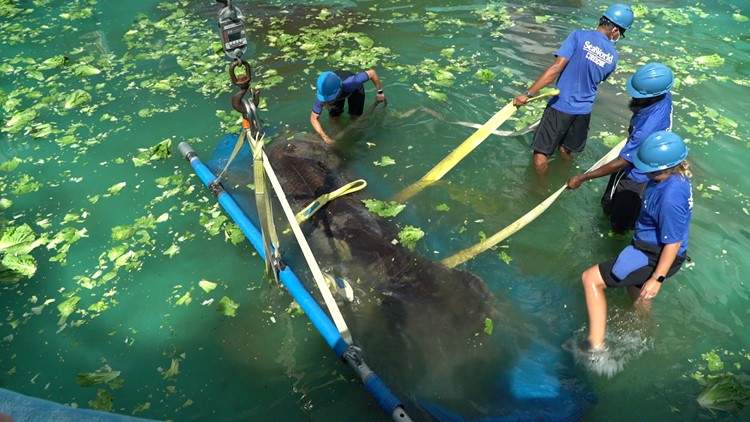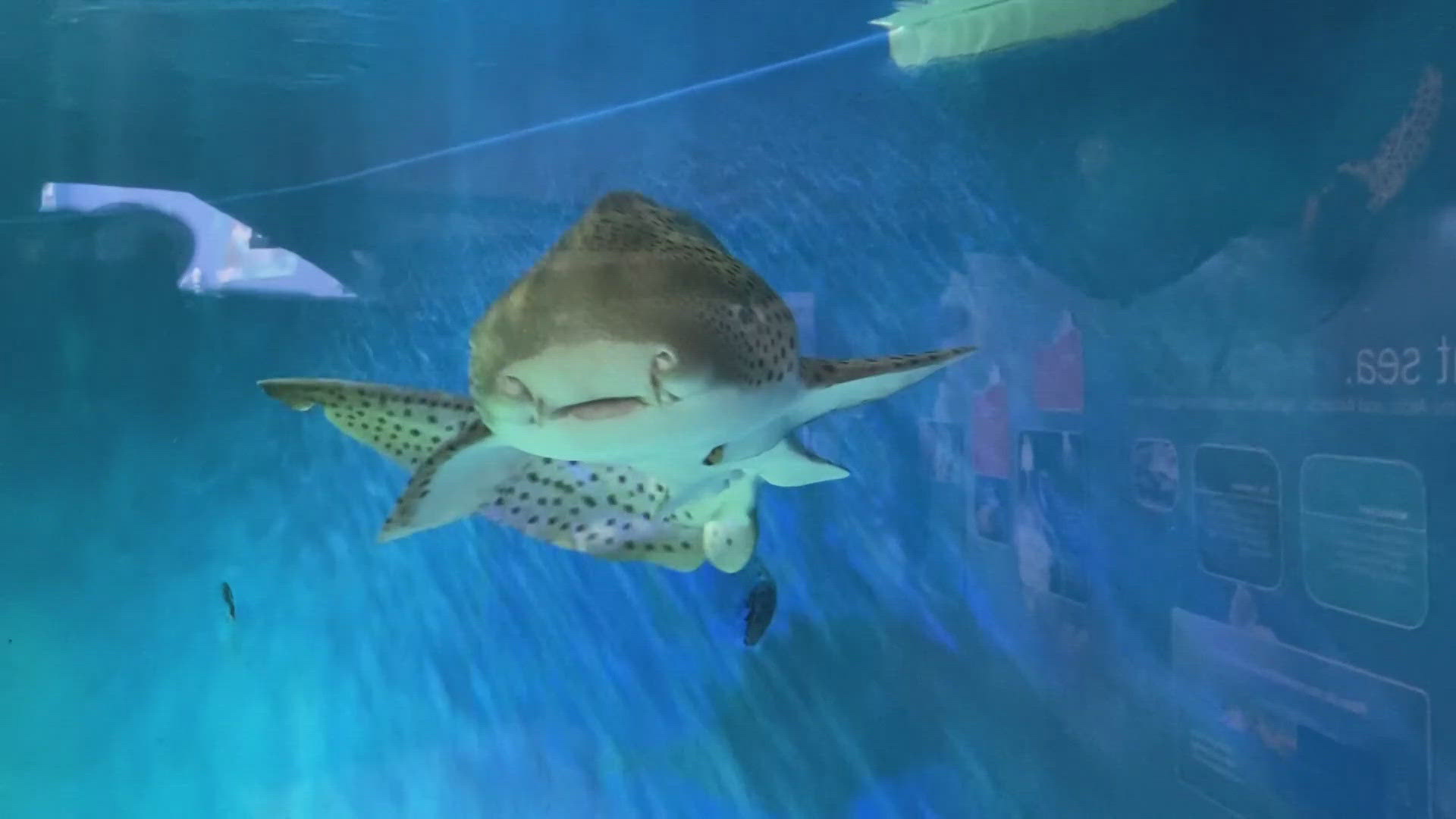CRYSTAL RIVER, Fla — A manatee found and rescued in Texas was returned to Kings Bay in Crystal River after spending eights month being rehabilitated at SeaWorld San Antonio, according to a news release.
The manatee was rescued back in December 2021 suffering from cold stress, flipper damage, severe weight loss and other ailments, the company said in a statement.
"While manatees are typically known to reside in Florida, seasonal migrations to other southern states have increased in recent years", SeaWorld said. "This is only the third manatee SeaWorld San Antonio has rehabilitated due to the uncommon presence of manatees in Texas."
SeaWorld joined forces with shipping company DHL to make the cross-country move possible. The manatee was transported in a custom, state-of-the-art container built specifically to hold manatees.
SeaWorld helped establish the first transport unit standards for the safe transport of cetaceans and manatees, which includes the use of open-top units designed to allow the animals to move around and adjust for comfort as needed while remaining safe within their container.
According to the news release, the population of manatees is on the decline due to the recent Unusual Mortality Event (UME) on the Atlantic Coast. Animals there have suffered given the die-off of food sources.
The rescued manatee arrived at SeaWorld Orlando for a 48-hour observation period to ensure its health hadn't been impacting the trip. After the manatee was cleared, it was transported to Kings Bay in Crystal River where it was returned to the warm waters, according to SeaWorld.
"As manatees continue to suffer from a dangerous unusual mortality event, it’s more important now than ever to dedicate our time, energy and resources to ensuring their continued survival,” Jon Peterson, the VP of Zoological Operations at SeaWorld Orlando and Head of SeaWorld Orlando Rescue Team said in a statement.
According to the FWC's final mortality report, 1,101 manatees died in 2021, compared to the confirmed 637 manatees that died in 2020.
So, why are manatees dying at such high rates off the Atlantic coast? FWC says it is still investigating but that an initial assessment indicated a high number are emaciated due to a decline in seagrass and macroalgae.
"Improving water clarity and light penetration is essential for the restoration of healthy seagrass communities," the state agency's website reads.
Seagrass, like other plants, needs sunlight to grow; but persistent algal blooms have stunted its ability to do so dramatically. As a result, the primary food source for manatees has been scarce.
The Florida manatee is a native species that can be found in multiple waterways across the state. According to FWC, there are an estimated 7,520 to 10,280 manatees statewide today, reclassifying them from an endangered species in 2017.



